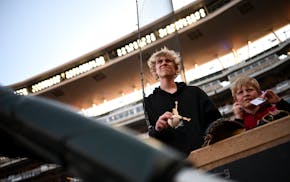Long days can be good, and we're about to experience them.
The solstice is Sunday, beginning at 11:38 a.m. Then, from an astronomical perspective, summer begins in the Northern Hemisphere, and we experience the longest day of the year.
In the Twin Cities area, we have 15 hours, 36 minutes of daylight to enjoy each day between June 17 and June 24 — the eight longest days of the year. The seasonal temperatures call for a high in the low 80s, with a low in the low 60s. Really, perfect.
Birds start singing about 4:30 a.m., usually American robins first. House wrens, song sparrows, blue jays, northern cardinals, and Baltimore orioles are fledging. Common nighthawks incubate their eggs, and red-winged blackbirds feed their nestlings. Adult Canada geese are particularly vulnerable now as they molt, losing their flight feathers. By 9:30 p.m. most chimney swifts are back in their roosts. The last robin call is about 40 minutes after sunset.
During these long days, red mulberry trees are loaded with fruit relished by gray catbirds. Shrub and garden roses flower profusely, and the first hollyhock and common milkweed flowers open. Honeybees and other pollinators forage on yellow sweet clover, white clover and staghorn sumac flowers. Young 13-lined ground squirrels explore their new world. In Grand Marais, we enjoy the fragrances of blooming lilacs and crabapple trees.
Jim Gilbert's Nature Notes are heard on WCCO Radio at 7:15 a.m. Sundays. His observations have been part of the Minnesota Weatherguide Environment Calendars since 1977, and he is the author of five books on nature in Minnesota. He taught and worked as a naturalist for 50 years.
Analysis: The IndyCar season has just started but free agency is in full swing after only 2 races

Live from Target Center: Timberwolves vs. Suns game updates

Is the east side the best side in high school baseball? Poll has an answer.
Webb Simpson offers to resign from PGA Tour board. But only if McIlroy replaces him, AP source says

